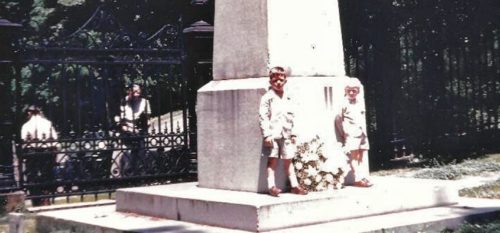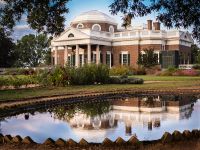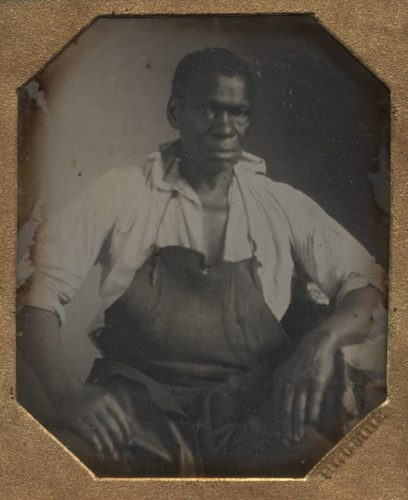Monticello recognizes the rest of Thomas Jefferson’s children
Share
Explore Our Galleries
Breaking News!
Today's news and culture by Black and other reporters in the Black and mainstream media.
Ways to Support ABHM?
Our founding father, my 6th great-grandfather, had 6 children with his slave Sally Hemings.
By Lucien K. Truscott IV, Salon
 When my brother Frank and I visited our great aunts Mary Walker and Agnes Randolph at their home in Charlottesville in the early 1950s, they used to load us into the back seat of the family Buick and drive up the mountain to Monticello and drop us off for the day. My aunts had been born at Edgehill, the Randolph family plantation, just a few miles down the mountain. My aunts treated Monticello as the family home, and we were given the run of the place.
When my brother Frank and I visited our great aunts Mary Walker and Agnes Randolph at their home in Charlottesville in the early 1950s, they used to load us into the back seat of the family Buick and drive up the mountain to Monticello and drop us off for the day. My aunts had been born at Edgehill, the Randolph family plantation, just a few miles down the mountain. My aunts treated Monticello as the family home, and we were given the run of the place.
We played on our sixth great-grandfather’s bed, we ran around upstairs in the unfinished bedrooms and played marbles in the Dome Room. We explored the cave-like work and storage rooms beneath the house, and we crawled out one of the upstairs windows onto the roof and playfully dropped pebbles on tourists as they passed by on the walks below.
 If you took a tour of the place back then, you were unlikely to hear the word “slave.” Tours made it sound like Jefferson built the place and was the only person living there. The truth was far different. Jefferson owned as many as 600 slaves during his lifetime, and in the years after he retired to Monticello from the presidency, there were some 100 to 125 slaves living and working at his plantation every day.
If you took a tour of the place back then, you were unlikely to hear the word “slave.” Tours made it sound like Jefferson built the place and was the only person living there. The truth was far different. Jefferson owned as many as 600 slaves during his lifetime, and in the years after he retired to Monticello from the presidency, there were some 100 to 125 slaves living and working at his plantation every day.
Thomas Jefferson’s slaves built Monticello. They cleared the land and felled every tree, they sawed and finished every board, they made and laid every brick, they forged and pounded every nail in that house. They planted and harvested his vegetable garden and crops. They made his life at Monticello possible. Without slaves, Thomas Jefferson would not have had the time in the day to write the Declaration of Independence. Without slaves, the White House wouldn’t have been built. Neither would the Capitol building. In this and so many other ways, slaves are truly among the Founding Fathers and Founding Mothers of this country, and yet up there at Mr. Jefferson’s house, it was as if they never existed…

Isaac Granger began life as an enslaved skilled artisan on Jefferson’s plantation. He ended his life in the 1840s as a free man in Petersburg, Virginia. His recollections of life at Monticello were recorded.
You can judge him morally as a slave owner and as a man, but the controversy is over. Jefferson was the father of Sally Hemings’ children, and Monticello, where they lived and worked, is now as much the family home of my Hemings cousins and all the other slave descendants as it was mine when my Randolph great aunts used to drop off my brother Frank and me there for the day years ago…
Read entire article here
Get Monticello Slavery App here
Read about special exhibit here
Read more Breaking News here









Comments Are Welcome
Note: We moderate submissions in order to create a space for meaningful dialogue, a space where museum visitors – adults and youth –– can exchange informed, thoughtful, and relevant comments that add value to our exhibits.
Racial slurs, personal attacks, obscenity, profanity, and SHOUTING do not meet the above standard. Such comments are posted in the exhibit Hateful Speech. Commercial promotions, impersonations, and incoherent comments likewise fail to meet our goals, so will not be posted. Submissions longer than 120 words will be shortened.
See our full Comments Policy here.